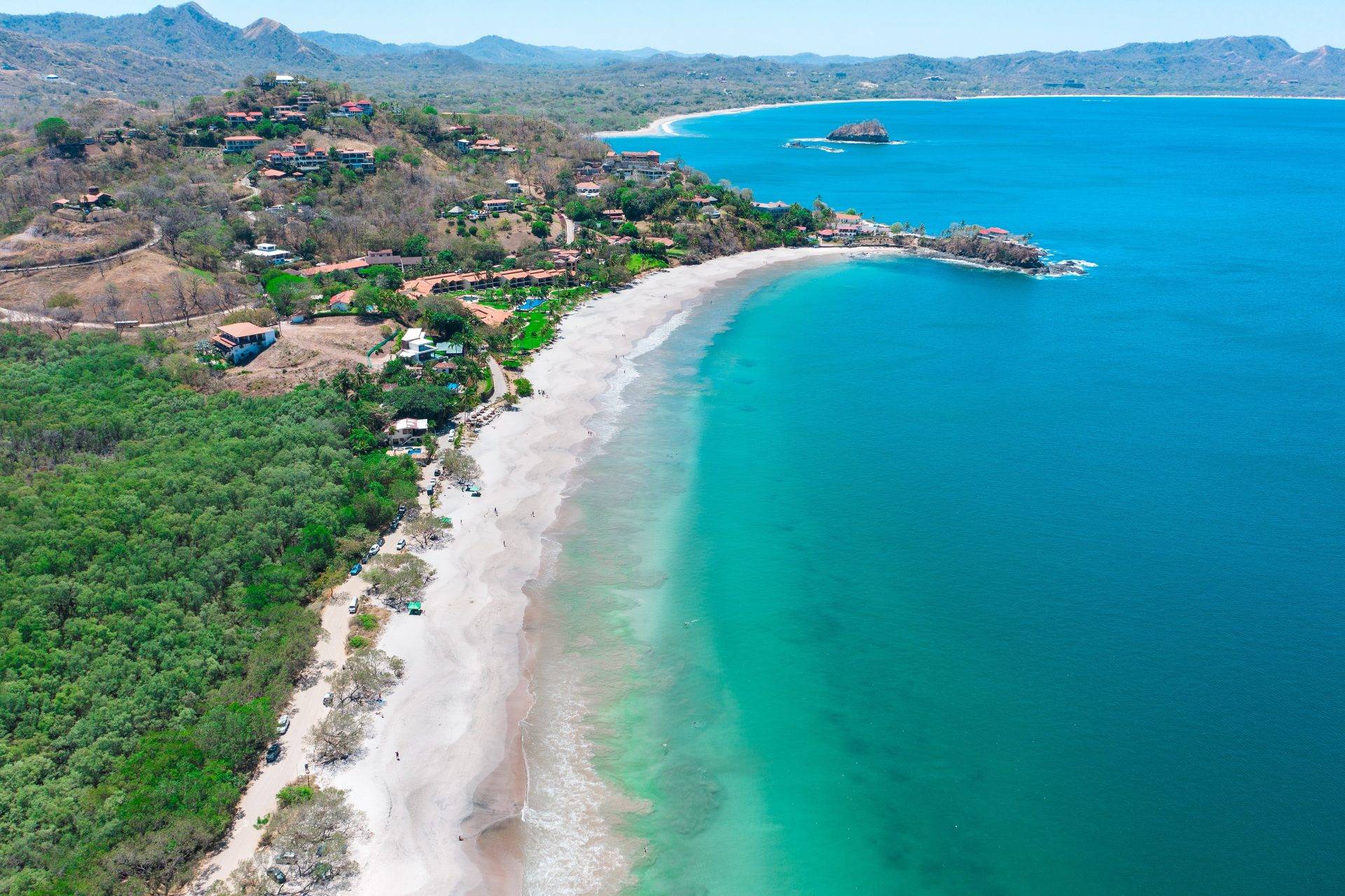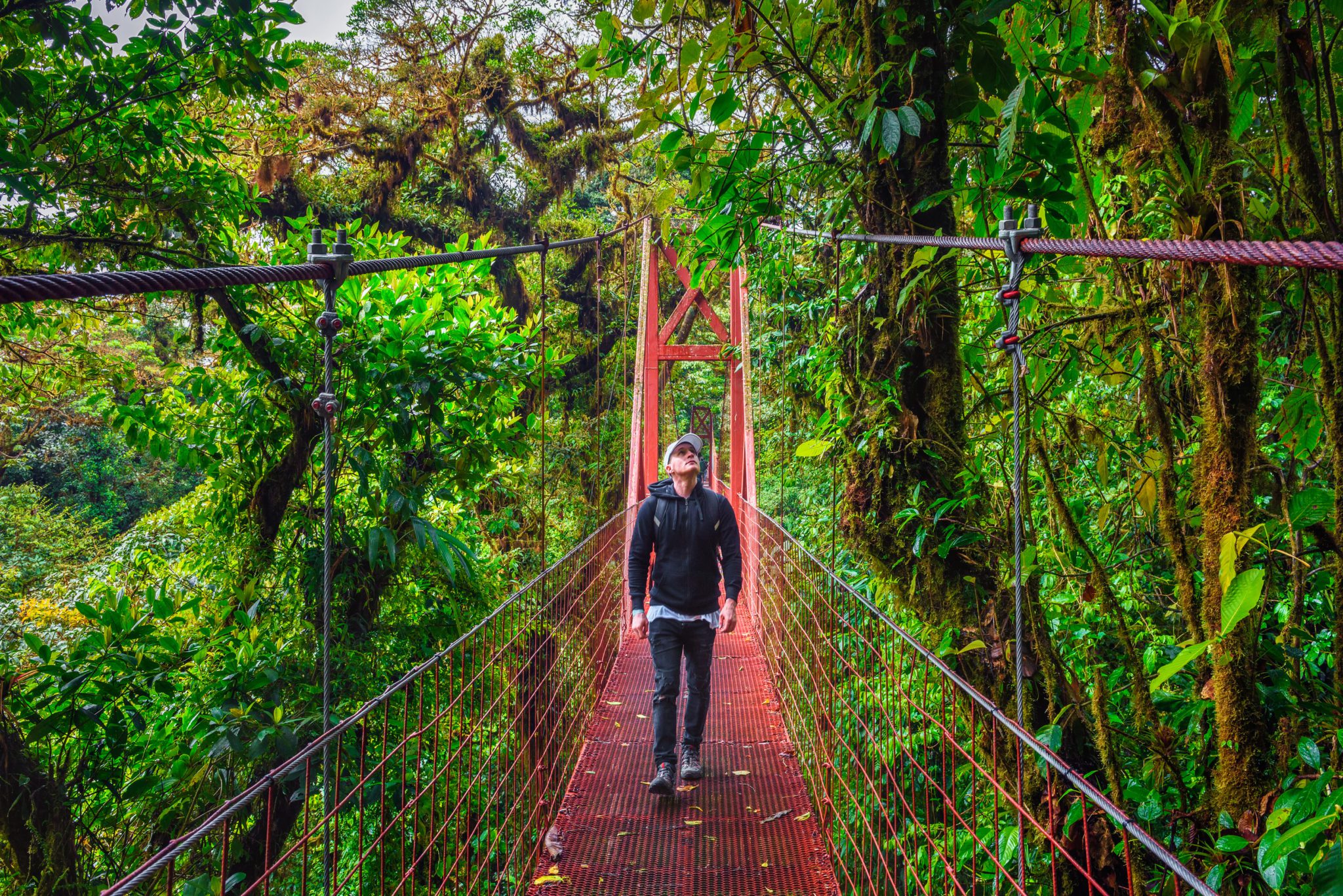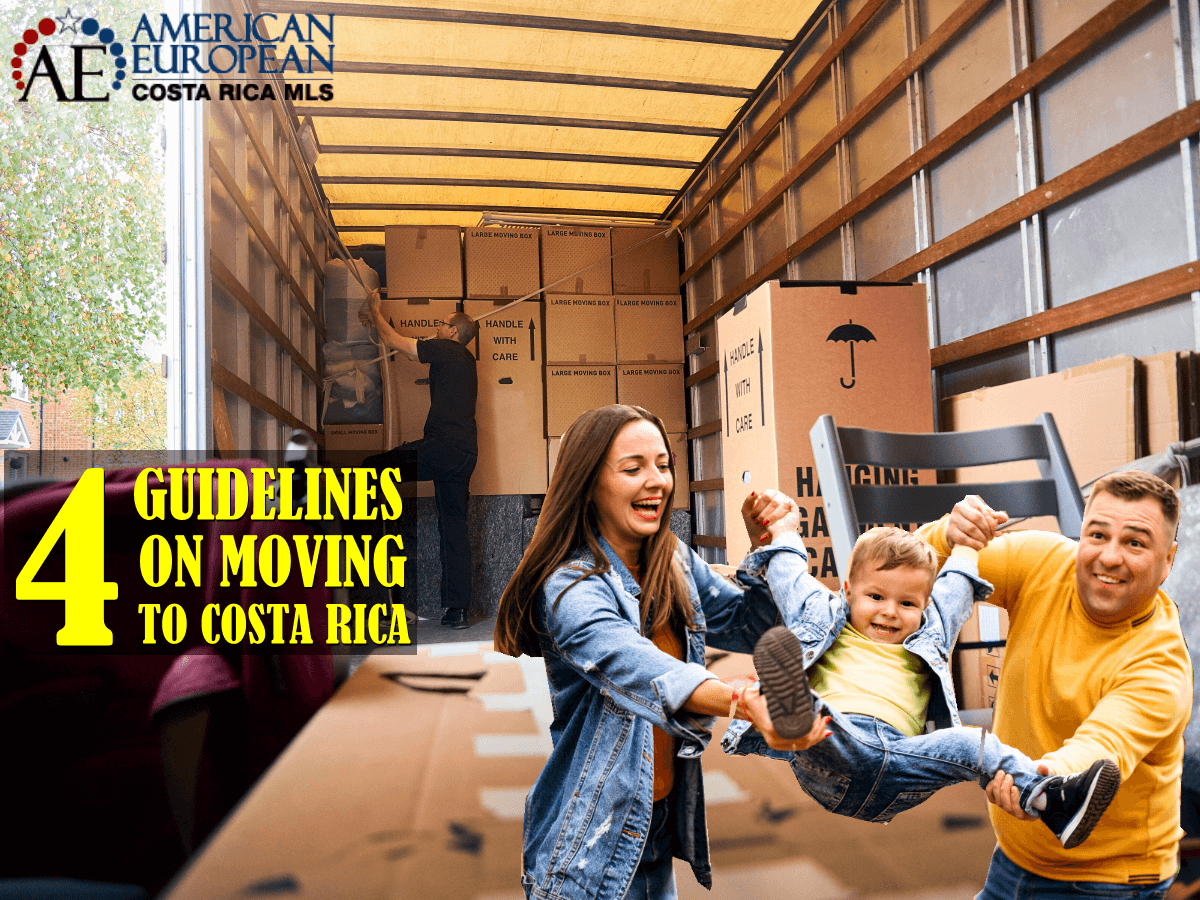Moving to Costa Rica offers an enticing blend of natural beauty, affordable living, and business opportunities. From pristine beaches to lush rainforests, this Central American gem captivates with its vibrant culture, warm climate, and welcoming expat community. Whether you’re seeking a new adventure, a peaceful retirement, or a thriving business environment, Costa Rica beckons with its unique allure.
This comprehensive guide will delve into every aspect of relocating to Costa Rica, from legal requirements and healthcare to cultural immersion and lifestyle. We’ll explore the cost of living, education system, and economic climate, providing you with the essential knowledge to make an informed decision about your move.
Relocation Considerations
Costa Rica offers an attractive destination for relocation, boasting stunning natural beauty, a stable political environment, and a relatively low cost of living. However, it’s essential to carefully consider the legal, healthcare, and educational aspects before making the move.
Legal Requirements
Foreigners seeking to reside in Costa Rica must obtain a visa or residency permit. The most common visa option is the tourist visa, which allows for a stay of up to 90 days. For longer stays, a residency permit is required, and there are various options available depending on the purpose of the stay, such as retirement, investment, or work.
The application process involves submitting various documents, including a passport, proof of financial stability, and a criminal background check.
Healthcare System
Costa Rica’s healthcare system is renowned for its high quality and affordability. The country has a universal healthcare system, known as the Caja Costarricense de Seguro Social (CCSS), which provides comprehensive coverage to all citizens and legal residents. The CCSS covers a wide range of services, including primary care, specialist consultations, hospitalizations, and medications.
Private healthcare options are also available, offering additional amenities and services.
Education System
Costa Rica’s education system is highly regarded, with a strong emphasis on literacy and numeracy. Public schools are free and provide a high standard of education, with a curriculum that aligns with international standards. Private schools offer a wider range of programs and facilities, but they come at a higher cost.
Higher education opportunities include public and private universities, which offer a variety of undergraduate and graduate programs.
Browse the implementation of little bradley falls saluda in real-world situations to understand its applications.
Cost of Living
Costa Rica offers a relatively affordable cost of living compared to many other popular expat destinations. While expenses can vary depending on your lifestyle and location, the overall cost of living is generally lower than in the United States, Canada, or Western Europe.
The table below provides a comparison of the cost of living in Costa Rica to other popular expat destinations:
| Expense | Costa Rica | Mexico | Panama | Colombia |
|---|---|---|---|---|
| Rent | $300-$800 | $200-$600 | $400-$1,000 | $250-$700 |
| Groceries | $200-$400 | $150-$300 | $250-$500 | $180-$350 |
| Utilities | $100-$200 | $50-$150 | $150-$300 | $80-$200 |
| Transportation | $50-$150 | $20-$80 | $100-$250 | $40-$120 |
On average, a family of four can expect to spend around $2,000-$3,000 per month on essential expenses, including housing, food, healthcare, and education.
Housing, Moving to costa rica
The availability and affordability of housing in Costa Rica vary depending on the location and type of property. In popular expat destinations like San José and the Central Valley, rental rates and purchase prices tend to be higher than in other parts of the country.
Rental rates for a one-bedroom apartment in San José start at around $300 per month, while a three-bedroom house can cost anywhere from $600 to $1,000 per month. Purchase prices for a two-bedroom house in the Central Valley start at around $100,000.
Outside of the Central Valley, housing is generally more affordable. Rental rates for a one-bedroom apartment in a smaller city or town start at around $200 per month, while a three-bedroom house can cost anywhere from $400 to $800 per month.
Purchase prices for a two-bedroom house outside of the Central Valley start at around $50,000.
Cultural Immersion
Costa Rican culture is a vibrant blend of indigenous, Spanish, and Afro-Caribbean influences, resulting in a unique and welcoming society. Understanding local customs and etiquette is crucial for a successful integration.
Costa Ricans are known for their warmth, hospitality, and respect for others. Greetings typically involve a handshake or a kiss on the cheek among friends and family. Punctuality is not strictly adhered to, and it is common to arrive slightly late for social events.
Language Barriers
Spanish is the official language of Costa Rica, and while English is widely spoken in tourist areas, it is recommended to learn basic Spanish phrases for daily interactions. Immersion in the local language will enhance your cultural experience and foster meaningful connections with locals.
Local Cuisine
Costa Rican cuisine is a testament to the country’s rich cultural heritage. Traditional dishes often feature fresh ingredients, such as rice, beans, and plantains. Popular dishes include:
- Gallo Pinto:A breakfast staple made with rice, beans, and vegetables.
- Casado:A typical lunch or dinner plate consisting of rice, beans, meat, salad, and plantains.
- Olla de Carne:A beef stew with vegetables and spices.
Dining experiences in Costa Rica are typically casual and family-oriented. It is common to share meals and engage in lively conversations.
You also can investigate more thoroughly about adams canyon trail to enhance your awareness in the field of adams canyon trail.
Arts and Culture
Costa Rica has a thriving arts and culture scene. Traditional music, such as marimba and calypso, is popular, and there are numerous opportunities to attend live performances. Dance is also an integral part of Costa Rican culture, with traditional dances like the Punto Guanacasteco and the Tambito being widely celebrated.
The country is home to several museums and theaters that showcase local and international art and performances. Traditional festivals, such as the Dia de los Muertos (Day of the Dead) and the Fiesta de los Diablitos (Festival of the Little Devils), offer a glimpse into the country’s rich cultural heritage.
Business Opportunities: Moving To Costa Rica
Costa Rica offers a favorable economic climate for businesses, with a stable economy, a skilled workforce, and a supportive government. The country has attracted numerous foreign investors due to its attractive investment opportunities and ease of doing business.
Key industries in Costa Rica include tourism, agriculture, manufacturing, and technology. The country is also home to a growing number of startups and small businesses. Costa Rica has implemented various measures to attract foreign investment, including tax incentives, free trade agreements, and a streamlined business registration process.
Successful Business Relocations
Several successful businesses have relocated to Costa Rica, citing the country’s favorable business environment and quality of life. For example, Intel established a major manufacturing facility in Costa Rica in 1998, creating thousands of jobs and contributing significantly to the country’s economy.
Other notable companies that have relocated to Costa Rica include Procter & Gamble, Amazon, and Hewlett-Packard.
Tax System
Costa Rica has a territorial tax system, which means that only income earned within the country is subject to taxation. The corporate tax rate is 30%, and there are no capital gains or wealth taxes. Foreign investors are eligible for a variety of tax exemptions and incentives, including tax holidays and reduced tax rates on reinvested profits.
Lifestyle and Recreation
Costa Rica is a country that offers a wide range of activities and attractions for visitors and residents alike. With its stunning natural beauty, rich cultural heritage, and excellent climate, Costa Rica is a great place to enjoy an active and fulfilling lifestyle.
Popular Activities and Attractions
- Beaches:Costa Rica has over 800 miles of coastline, with beaches ranging from secluded coves to long stretches of white sand. Some of the most popular beaches include Playa Tamarindo, Playa Manuel Antonio, and Playa Flamingo.
- National Parks:Costa Rica is home to over 30 national parks, which protect a wide range of ecosystems, from rainforests to cloud forests to volcanoes. Some of the most popular national parks include Manuel Antonio National Park, Tortuguero National Park, and Corcovado National Park.
- Adventure Sports:Costa Rica is a great place to enjoy adventure sports such as zip-lining, white-water rafting, and surfing. There are many tour operators that offer these activities, and they can be arranged for all levels of experience.
- Cultural Landmarks:Costa Rica has a rich cultural heritage, and there are many cultural landmarks to explore. Some of the most popular cultural landmarks include the National Museum of Costa Rica, the Gold Museum, and the Jade Museum.
Climate and Weather
Costa Rica has a tropical climate, with average temperatures ranging from 70 to 85 degrees Fahrenheit throughout the year. The country has two seasons: the dry season (December to April) and the rainy season (May to November). The rainy season is characterized by heavy rainfall, but there is still plenty of sunshine.
Obtain a comprehensive document about the application of indian rocks beach florida map that is effective.
The dry season is generally drier, but there can still be some rain.
There are some regional differences in climate. The Caribbean coast is generally warmer and wetter than the Pacific coast. The central valley is cooler and drier than the coastal areas.
Healthcare
Costa Rica has a universal healthcare system, which provides basic healthcare to all citizens and residents. The quality of care is generally good, and there are a number of private hospitals and clinics that offer a wider range of services.
Understand how the union of restaurants on tierra verde can improve efficiency and productivity.
The cost of healthcare in Costa Rica is relatively low. A basic doctor’s visit costs around $20, and a hospital stay costs around $100 per day. There are also a number of insurance plans available that can help to cover the cost of healthcare.
Summary
Moving to Costa Rica is not just a change of address; it’s an embrace of a vibrant and fulfilling lifestyle. Whether you’re drawn to the stunning natural landscapes, the affordable living, or the thriving business opportunities, Costa Rica offers a unique blend of adventure, tranquility, and growth.
Embrace the “pura vida” spirit and discover why so many have made Costa Rica their new home.
Essential FAQs
What are the visa requirements for moving to Costa Rica?
Costa Rica offers various visa options, including tourist visas, residency visas, and work visas. The specific requirements depend on your nationality and purpose of stay.
Is healthcare affordable in Costa Rica?
Costa Rica has a universal healthcare system known as CAJA. While healthcare costs are generally lower than in many developed countries, the quality of care is comparable.
What is the cost of living in Costa Rica?
The cost of living in Costa Rica varies depending on your lifestyle and location. However, it’s generally more affordable than many other popular expat destinations.





